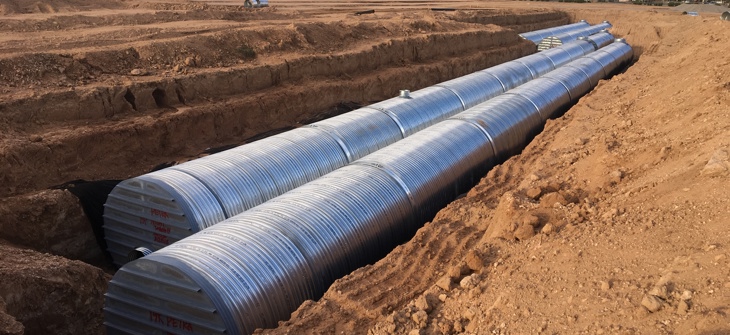
Engineering for Slopes Over Corrugated Metal Pipe Detention Systems
Designing Corrugated Metal Pipe Detention Systems Under Sloped Conditions
Sloping fills over underground corrugated metal pipe (CMP) is an obstacle and consideration when choosing a suitable stormwater detention location. While it is always preferable to place underground detention systems on locations with no slope, that is not always possible. Any given project site may contain several slope geometries or profiles that could pose a risk to underground structures because of unbalanced soil loads. Therefore, in these situations, it is critical to a project's success to know the engineering guidelines to avoid placing an underground system in locations where slope conditions may compromise a design.
When designing with CMP, most project cases assume H-20 highway live loading***(See below table link for reference) for a minimum height of cover, which means for most CMP systems, the height of cover (HOC) is less than 8 ft. Once a CMP system has been fully installed, the designed slope would be presumed stable and less than or equal to 10%. This completed and final scenario is what should be used to evaluate the suitable installation area for a CMP detention system.
Typical slope profiles can be evaluated to ensure minimum design needs are met; each increasing in complexity to integrate a CMP solution.

The CMP installation location or proximity to the embankment slope is the relationship between the pipe's diameter and the height of cover. In each situation above, the HOC and CMP diameter are the most critical variables for meeting minimum site stability requirements. As a stormwater solution, CMP systems can outperform comparable products under remarkable engineered situations as long as the overall design has been considered early enough to meet a project's requirement.
